Handprinted Textiles from a Victorian Riverside Mill
 Sometimes you can walk past a building you love for years without the slightest clue as to what's inside it, but you always wonder, right? Well, the mystery of one my favourite warehouse buildings was debunked last year when I discovered through sheer coincidence that it was home to family run handprinted textiles company, Marina Mill.Just across the river from Rochester in Kent, this beautiful Victorian warehouse, known to have originally been a former Bryant & May match factory has been their base since the early 90s. Barely touched in all those years, the building is every bit as beautiful in its age as the fabrics that are produced here too. In 1967 following a degree in Fine Art and several years working along side Czech artist and designer Zika Asher, founder Keith Rawkins and his wife Stephanie began their journey into textiles from their basement flat in Fulham. Originally designing for the fashion industry, their focus gradually shifted to interiors and they were later joined by their daughter Tandine and son Guy in the late 80s. I popped over (literally) to meet Tandine and have a good look round...
Sometimes you can walk past a building you love for years without the slightest clue as to what's inside it, but you always wonder, right? Well, the mystery of one my favourite warehouse buildings was debunked last year when I discovered through sheer coincidence that it was home to family run handprinted textiles company, Marina Mill.Just across the river from Rochester in Kent, this beautiful Victorian warehouse, known to have originally been a former Bryant & May match factory has been their base since the early 90s. Barely touched in all those years, the building is every bit as beautiful in its age as the fabrics that are produced here too. In 1967 following a degree in Fine Art and several years working along side Czech artist and designer Zika Asher, founder Keith Rawkins and his wife Stephanie began their journey into textiles from their basement flat in Fulham. Originally designing for the fashion industry, their focus gradually shifted to interiors and they were later joined by their daughter Tandine and son Guy in the late 80s. I popped over (literally) to meet Tandine and have a good look round...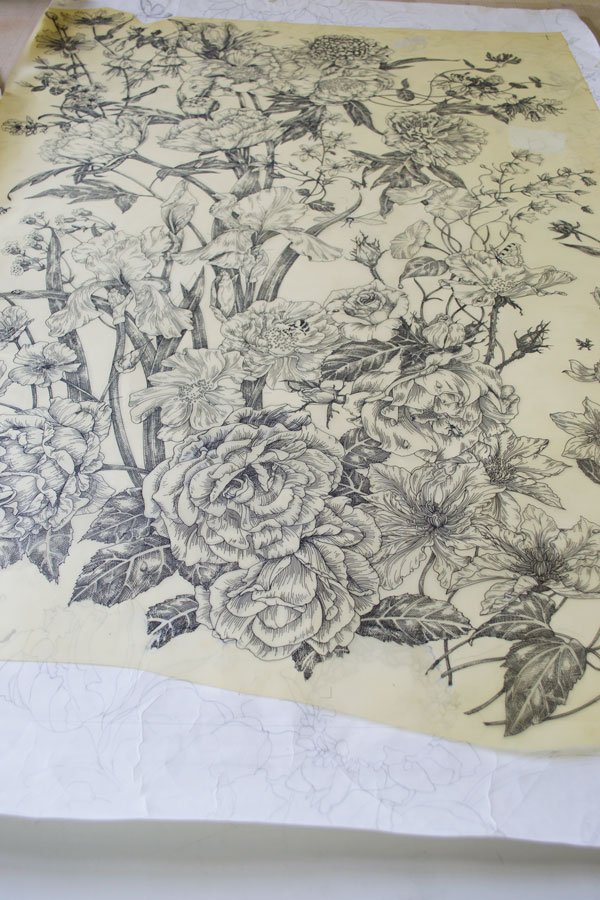 Over the many years the company has been producing handprinted textiles, the team have collaborated on designs for Colefax & Fowler, English Heritage and continue to develop fabrics for well known interior designers. Given the nature of their work and that so many designs are exclusive, I was unable to photograph much of it, however, I've seen it all with my own eyes and the quality is pretty breath-taking.
Over the many years the company has been producing handprinted textiles, the team have collaborated on designs for Colefax & Fowler, English Heritage and continue to develop fabrics for well known interior designers. Given the nature of their work and that so many designs are exclusive, I was unable to photograph much of it, however, I've seen it all with my own eyes and the quality is pretty breath-taking.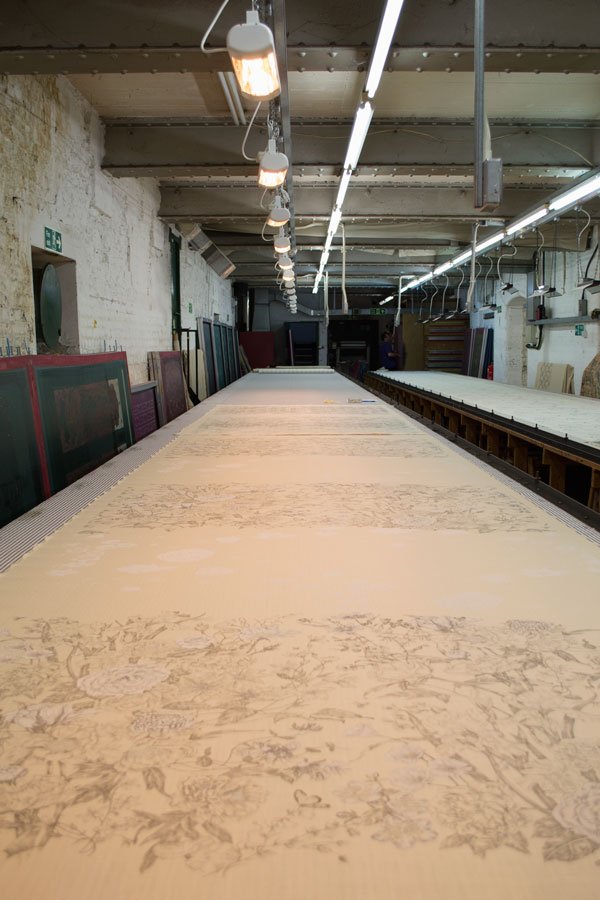 The process is quite complex, but what I understood was that each design is drawn out and developed, then moves on to computer where repeats are worked out before the screens can be printed and ready to use. Most fabrics with more than one colour (a maximum of six is used in general) will be left to dry in stages before the next colour is added on top-you can see the heaters on the ceiling which help to speed up the process.Tandine tells me how space was so limited in the basement flat in Fulham that her parents could only print a certain amount at any one time, so I could see why the warehouse was such a perfect fit for their needs - these printing tables are 28 feet long! It's a two man job to screen print too, both carefully placing the screen against markings at intervals to ensure the design lines up, then swiftly dragging the ink across with a squeegee.
The process is quite complex, but what I understood was that each design is drawn out and developed, then moves on to computer where repeats are worked out before the screens can be printed and ready to use. Most fabrics with more than one colour (a maximum of six is used in general) will be left to dry in stages before the next colour is added on top-you can see the heaters on the ceiling which help to speed up the process.Tandine tells me how space was so limited in the basement flat in Fulham that her parents could only print a certain amount at any one time, so I could see why the warehouse was such a perfect fit for their needs - these printing tables are 28 feet long! It's a two man job to screen print too, both carefully placing the screen against markings at intervals to ensure the design lines up, then swiftly dragging the ink across with a squeegee.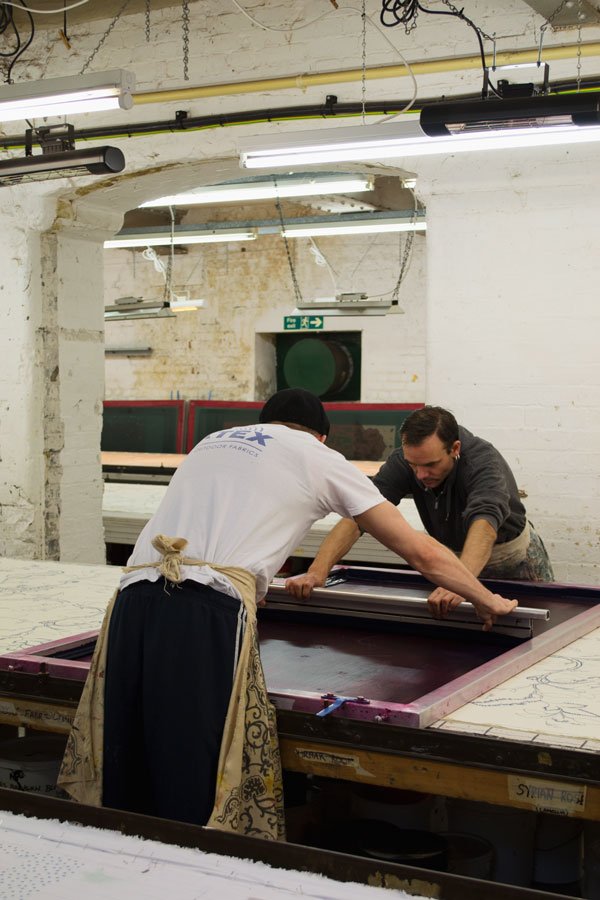
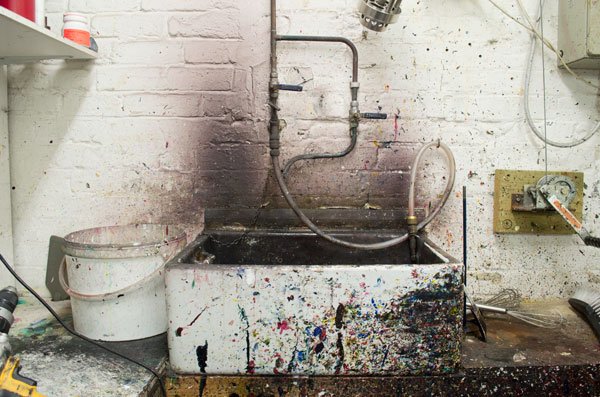
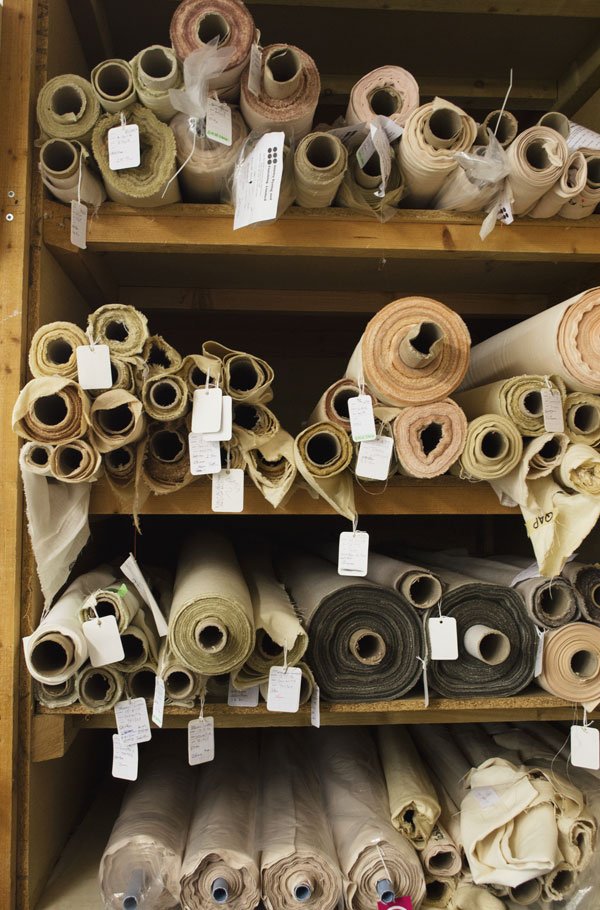
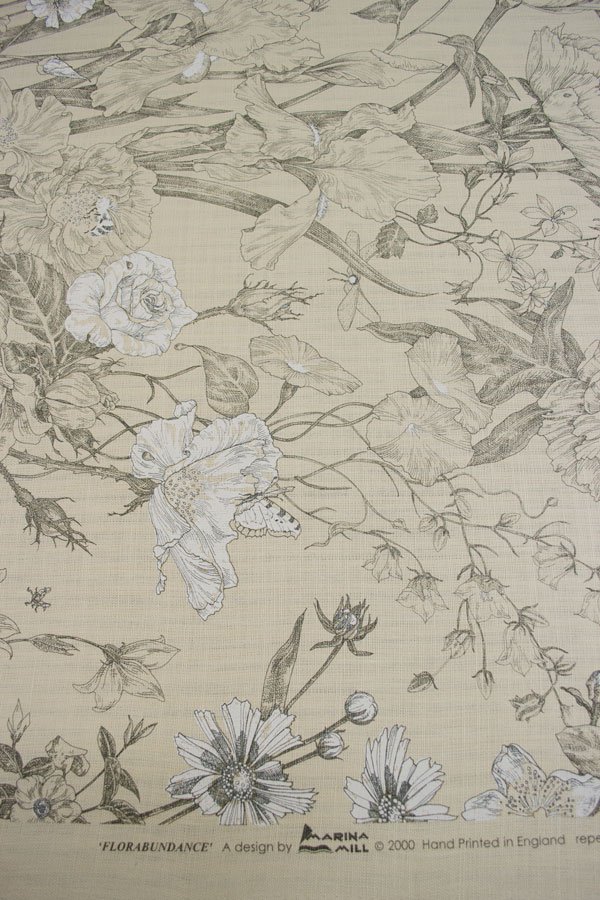
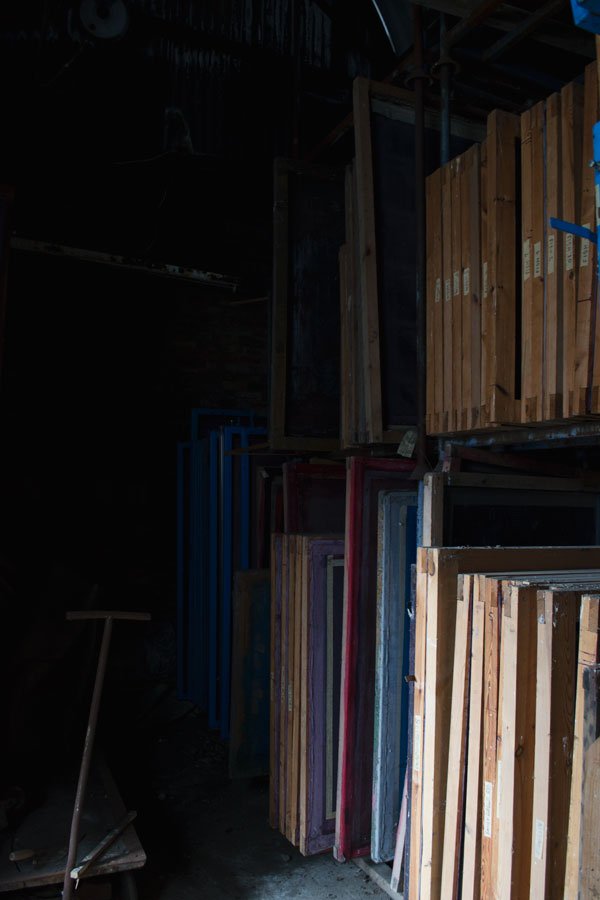 This large Victorian shed houses their entire print archive, row upon row of screens hiding yet more elaborate designs. Tandine expressed that she would love to have their own regular collection in future, so perhaps these will see the light of day again soon?
This large Victorian shed houses their entire print archive, row upon row of screens hiding yet more elaborate designs. Tandine expressed that she would love to have their own regular collection in future, so perhaps these will see the light of day again soon?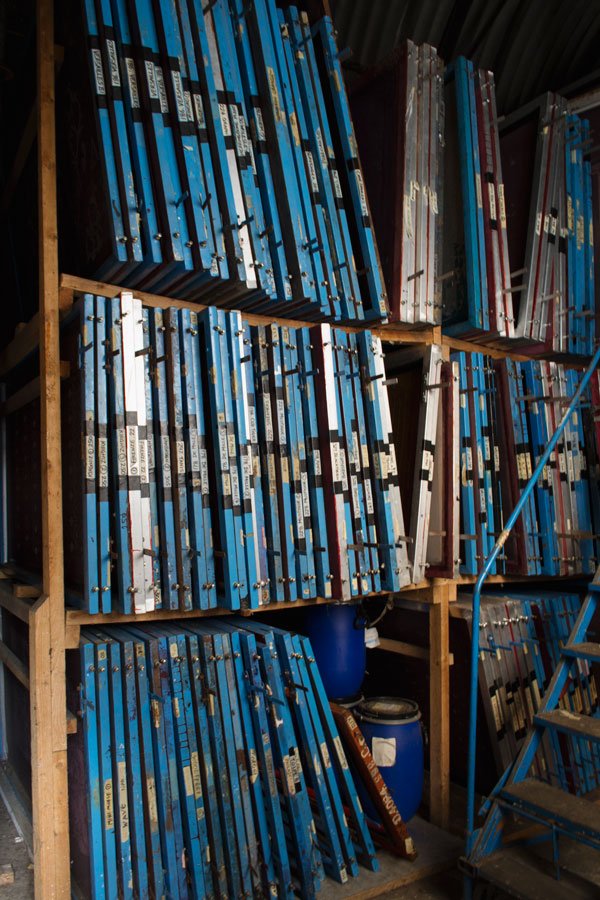 Much of the cottons they use to print on are British made which makes me love what they do all the more. It's so rare to find a company with such a rich history that has survived the test of time, much less a stones throw from me. Whilst they continue to adapt to the market (including supplying to the Superyacht industry), I'm happy to see that they hold on to their origins and in turn support other British companies too.
Much of the cottons they use to print on are British made which makes me love what they do all the more. It's so rare to find a company with such a rich history that has survived the test of time, much less a stones throw from me. Whilst they continue to adapt to the market (including supplying to the Superyacht industry), I'm happy to see that they hold on to their origins and in turn support other British companies too.